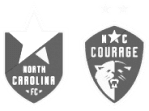Sleep apnea is a common sleeping disorder that affects an estimated 18 million adults in the United States and a good percentage of children. The disorder is always disrupting, and it can be serious in some situations.
What is Sleep Apnea?
People who suffer from sleep apnea experience repeated breathing interruptions as they sleep. The starts and stops can last anywhere from a few seconds to several minutes, and they’re frequently disrupting both to the individual who has the disorder and any partner they sleep with.
Symptoms of Sleep Apnea
The most common symptom of sleep apnea is snoring, and many people who snore loudly or frequently suffer from sleep apnea to one extent or another. Not everyone who snores does have the sleeping disorder, though.
While sleep apnea itself is rarely (if ever) fatal, it has several undesirable side effects and some of these are serious. The disorder can lead to:
- High blood pressure
- Repeated heart attacks
- Repeated heart failures
- Repeated strokes
- Depression
The cardiovascular issues that occur with sleep apnea are most common in individuals who are already suffering or predisposed to these problems. Sleep apnea doesn’t necessarily cause these issues, but it can exacerbate any cardiovascular problems that are already present.
Additionally, people who have sleep apnea are frequently tired even when they get an adequate number of hours of sleep. Since their sleep is continually interrupted, they’re unable to get sufficient deep and restful sleep. To a lesser extent, partners may also be tired if snoring keeps them up.
Types of Sleep Apnea
The blockages that cause sleep apnea may occur in two areas, and there are three types of sleep apnea depending on where the blockages are located.
Obstructive sleep apnea, which is the most common form of the disorder, normally occurs when muscles in the back of the throat relax too much. These muscles support the tonsils, soft palate, tongue and sides of the throat. If the muscles relax too much, the opening in this part of the airway narrows and breathing becomes difficult.
When the airway narrows due to obstructive sleep apnea, the brain automatically begins breathing through the nose instead of the mouth. This resolves the issue, but there’s still a disruption in the person’s sleep pattern. The disruption can occur as many as five to thirty times in an hour.
Central sleep apnea is a less common form of the disorder in which the transmission from the brain to the muscles needed for breathing fails. As a result, a person doesn’t make any effort to breathe for a small period of time.
Complex sleep apnea occurs when a person suffers from both obstructive sleep apnea and central sleep apnea.
Orthodontic Causes of Sleep Apnea
In addition to the muscle-related causes of obstructive sleep apnea, this form of the disorder can also be caused by an orthodontic issue. In some patients, the airway isn’t blocked by issues with the throat muscles but instead by one or more of the following orthodontic problems:
- Tooth misalignment
- Jaw misalignment
- Dental arch issue
When an orthodontic issue is causing sleep apnea, the condition requires the expertise of an orthodontic specialist who can recommend a dental device for sleep apnea.
Orthodontic Treatments of Sleep Apnea
Depending on the exact orthodontic issue that’s causing a person’s obstructive sleep apnea, there are three different types of dental appliances for sleep apnea that an orthodontist might recommend.
First, braces and aligners may be used to treat obstructive sleep apnea caused by misaligned teeth. These devices slowly but methodically move teeth out of their incorrect positions and into positions where the teeth won’t block the airway. Braces and aligners can both be used to treat children’s and adults’ sleep apnea, with aligners offering a less noticeable look than braces.
Second, a rapid palate expander is sometimes used to treat obstructive sleep apnea issues in children. The device is affixed to the upper molars by cemented bands or bonding, and it has a portion that bridges across the upper jaw. The purpose of a rapid palate expander is to help widen the space in the upper jaw.
Third, a mandibular advancement splint is a custom-fit brace that changes the jaw alignment during sleep. The device moves the lower jaw slightly forward and downward. The effect of this small movement is a widening of the airway, which reduces the prevalence of obstructive sleep apnea symptoms.
When a dental appliance for sleep apnea is deemed appropriate by an orthodontist, the appliance will have substantial benefits over a CPAP machine. Compared to the machine, braces, aligners, rapid palate expanders and mandibular advancement splints are smaller, less noticeable and quieter. Sometimes they need to be used with a CPAP machine, but in certain cases, a dental appliance for sleep apnea may eventually eliminate the need for a CPAP machine.
Insurance May Cover a Dental Appliance for Sleep Apnea
Importantly, residents of North Carolina who suffer from obstructive sleep apnea usually have affordable access to any dental appliance for sleep apnea that they might need. When prescribed and fitted by an orthodontist, insurance often covers part or all of the cost of treatment.
Additionally, coverage may be available through either a dental insurance policy or a health insurance policy. Since obstructive sleep apnea is a medical condition, a health insurance policy may cover treatment even if the treatment is provided by an orthodontist in Raleigh. Exact coverage, of course, depends on a person’s diagnosis and health plan.
At Laster Orthodontics, we help families develop healthy, life-changing smiles using customized treatments, cutting-edge technologies, and caring relationships. Our individualized treatment plans help our patients achieve their perfect smile in the quickest, most painless way possible by utilizing a wide range of options from traditional braces to Propel accelerated treatment to Dr. Laster’s in-house aligner program, Laster Perfect Smile. With three locations throughout the Triangle Area, we create life-changing smiles every day.









